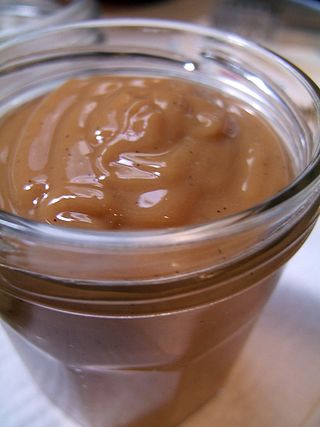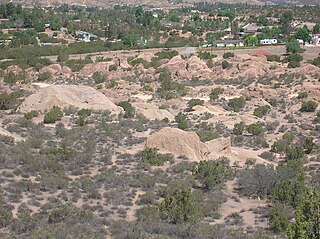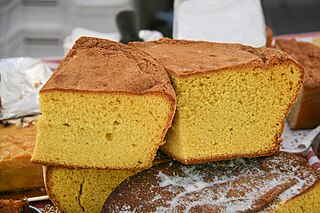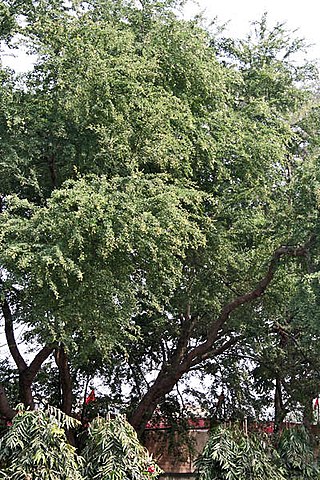"Dulce et Decorum est" is a poem written by Wilfred Owen during World War I, and published posthumously in 1920. The Latin title is taken from Ode 3.2 (Valor) of the Roman poet Horace and means "it is sweet and fitting". It is followed by pro patria mori, which means "to die for one's country". One of Owen's most renowned works, the poem is known for its horrific imagery and condemnation of war. It was drafted at Craiglockhart in the first half of October 1917 and later revised, probably at Scarborough but possibly Ripon, between January and March 1918. The earliest surviving manuscript is dated 8 October 1917 and addressed to his mother, Susan Owen, with the message: "Here is a gas poem done yesterday ."

Citrus limetta, alternatively considered to be a cultivar of Citrus limon, C. limon 'Limetta', is a species of citrus, commonly known as mousami, musami, sweet lime, sweet lemon, and sweet limetta, it is a member of the sweet lemons. It is small and round like a common lime in shape. It is a cross between the citron and a bitter orange.

An alfajor or alajú is a traditional confection typically made of flour, honey, and nuts. It is found in Argentina, Paraguay, the Philippines, Southern Brazil, Southern France, Spain, Uruguay, Peru, Ecuador, Colombia and Chile. The archetypal alfajor entered Iberia during the period of al-Andalus. It is produced in the form of a small cylinder and is sold either individually or in boxes containing several pieces.

Dulce de leche, also known as caramelized milk, milk candy or milk jam in English, is a confection popular in Latin America prepared by slowly heating sugar and milk over a period of several hours. The resulting substance, which takes on a spreadable, sauce-like consistency, derives its rich flavour and colour from non-enzymatic browning. It is typically used to top or fill other sweet foods.

Agua Dulce is a census-designated place in Los Angeles County, California, United States. It lies at an elevation of 2,526 feet (770 m), northeast of Santa Clarita. The community had a population of 3,342 at the 2010 census and covers a geographic area of about 23 square miles (59 km2). Agua Dulce is on the Pacific Crest Trail. The ZIP code is 91390, and the area code is 661.
Sweet and sour is a generic term that encompasses many styles of sauce, cuisine and cooking methods. It is commonly used in East Asia and Southeast Asia, and has been used in England since the Middle Ages. Sweet and sour sauce remains popular in Asian and Western cuisines.

Golfo Dulce is a gulf in Costa Rica, located at the south of the Province of Puntarenas. The inlet starts on the Pacific Ocean side of Costa Rica and extends slightly northward before turning west. The most westward part is at the city of Rincon. The bay separates the Osa Peninsula from the mainland Costa Rica.

Ají dulce, ají cachucha, quechucha, ajicito, or ají gustoso is any of a variety of sweet perennial peppers found in Latin America and the Caribbean. It is most widely known in Cuba, Jamaica, Puerto Rico, Dominican Republic and Venezuela, where it refers to a specific native variety of Capsicum chinense that is related to the habanero but with a much milder, smoky flavor. In the English-speaking Caribbean, it is known as seasoning pepper and is essential to a variety of traditional dishes.

A sweet onion is a variety of onion that is not pungent. Their mildness is attributable to their low sulfur content and high water content when compared to other onion varieties.
John Reading was an English composer and organist, and father of John Reading who is remembered as an important music copyist.

Bizcocho is the name given in the Spanish-speaking world to a wide range of pastries, cakes or cookies. The exact product to which the word bizcocho is applied varies widely depending on the region and country. For instance, in Spain bizcocho is exclusively used to refer to sponge cake. In Uruguay, most buttery flaky pastry including croissants are termed bizcocho, whilst sponge cake is called bizcochuelo. In Chile, the Dominican Republic and Bolivia bizcocho refers to a sweet dough (masa) baked with local ingredients, similar to the bizcocho from Spain. In Ecuador the dough of a bizcocho can either be sweet or salty. The US state New Mexico is unusual in using the diminutive form of the name, bizcochito, as the name for a locally developed and very popular cookie.

Dulce Enemiga is a Venezuelan telenovela written by Valentina Párraga and produced by Venevisión in 1995. This telenovela lasted 153 episodes and was distributed internationally by Venevisión International.

Pithecellobium dulce, commonly known as Manila tamarind, Madras thorn, monkeypod tree or camachile, is a species of flowering plant in the pea family, Fabaceae, that is native to the Pacific Coast and adjacent highlands of Mexico, Central America, and northern South America. It is also sometimes known as monkeypod, but that name is also used for several other plants, including Samanea saman. It is an introduced species and extensively naturalized in the Caribbean and Florida, as well as the Philippines and Guam via the Manila galleons. It has also been introduced to Thailand and South Asia, It is considered an invasive species in Hawaii.

Pionono describes different sweet or savory pastries from Granada, Spain, the Caribbean, South America, and the Philippines. It is named after Pope Pius IX's name in Spanish, Pío Nono.

Quince cheese is a sweet, thick jelly made of the pulp of the quince fruit. It is a common confection in several countries.
The Agua Dulce Mountains are a mountain range in the north-central Sonoran Desert of southwestern Arizona. The range is located in the extreme southwestern portion of Pima County, Arizona, immediately north of the international boundary with Mexico and about 30 mi (48 km) southwest of Ajo, Arizona. The range has three main sections that total about 15 miles in length and about nine miles in width. The range is located entirely within the Cabeza Prieta National Wildlife Refuge. The highpoint of the range is 2,852 feet (869 m) above sea level and is located at 32°01'32"N, 113°08'44"W. The summit is unnamed, but is marked on U.S. Geological Survey (USGS) maps for the "Quitovaquita" benchmark that was placed on the summit in 1920. The original surveyed height was 2,850 feet above sea level, but recent datum adjustments calculate the summit to be two feet higher.

"Na Na Na ", also known as "Mi Dulce Niña", is a song by Mexican-American cumbia group A.B. Quintanilla y Los Kumbia Kings. It was released in 2005 as the third single from their fourth studio album Fuego (2005).

Pan dulce, literally meaning "sweet bread", is the general name for a variety of Mexican pastries. Wheat-based breads were first introduced in Mexico by Spanish colonists, settlers and immigrants; however, Mexican pan dulce as we know it today rose to popularity during the French occupation in the mid 1800s. They are inexpensive treats and are consumed as breakfast and or dinner.

Pasta frola, pasta frolla, is a type of sweet tart common to Italy, Argentina, Paraguay, Uruguay, Egypt and Greece. It is a covered, jam-filled shortcrust pastry dish principally made from flour, sugar and egg. Common fillings include quince cheese, dulce de batata, dulce de leche, guava, or strawberry jam. The covering of the tart is a thin-striped lattice which displays the filling beneath in rhomboidal or square sections. Pastafrola is most usually oven-baked in a circular shape. Most of the Greek versions of this dish are filled with sweet jam: it is considered a morning dessert.

Winchester College appears in fiction both as a school and as fictional Old Wykehamists, people who had been to the school. At least 50 fictional Old Wykehamists have appeared in novels, sometimes following the stereotype of the dull civil servant, though in fact relatively few real Wykehamists choose that profession. The school is further represented indirectly by the writings of Old Wykehamists on other topics.
![]() This article incorporates text from a publication now in the public domain : Wood, James, ed. (1907). "Dulce Domum". The Nuttall Encyclopædia . London and New York: Frederick Warne.
This article incorporates text from a publication now in the public domain : Wood, James, ed. (1907). "Dulce Domum". The Nuttall Encyclopædia . London and New York: Frederick Warne.












